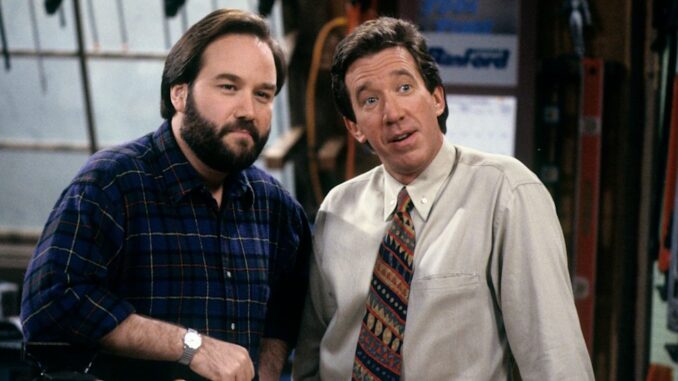
From Tool Belt to… Where Did He Go? The Unsettling Familiarity of Fading Fame in a Recent Photo
The tabloid blazed with the headline: "HOME IMPROVEMENT STAR LOOKS UNRECOGNIZABLE IN RECENT PHOTO!" Beside it, a grainy, paparazzi-style image. The face, once a fixture of primetime television, was obscured by unflattering lighting and a baseball cap pulled low. But the eyes, those crinkled, mischievous eyes, hinted at the man beneath the years and, perhaps, the choices. Looking at that picture, I wasn't just seeing a faded celebrity; I was seeing a stark reminder of the inevitable march of time and the complex, often unsettling relationship we have with fame and its fleeting nature.
The article, of course, trafficked in the usual clickbait fodder: speculation about plastic surgery gone wrong, health scares, and the general narrative of a beloved icon "letting himself go." But beyond the superficial judgment, the photo sparked a deeper reflection. This man, once a symbol of wholesome family values and DIY ingenuity, was now presented as a cautionary tale, a spectacle for our fleeting amusement. We, as viewers, had invited him into our homes, watched him fumble with power tools and impart folksy wisdom. We felt, in a way, that we knew him. And now, seeing him in this diminished, unrecognizable state, felt like a betrayal, not by him, but by the relentless machinery of celebrity culture.
There's a certain comfort we derive from seeing famous faces maintain their familiar forms. It reinforces the illusion of permanence, a bulwark against the terrifying truth of our own mortality. When a celebrity, particularly one we associate with a specific era of our lives, visibly ages or undergoes drastic changes, it's like looking in a distorted mirror, confronting the passage of time head-on. The face in the photo wasn't just older; it looked tired, burdened, stripped of the polished facade we were accustomed to. It was a reminder that even the brightest stars eventually fade, and that the weight of expectation, the pressure to maintain a youthful image in the relentless glare of the public eye, can be crushing.
The "unrecognizable" aspect of the photo wasn't just about wrinkles or weight gain; it was about a loss of the persona. The man in the picture seemed to have shed the carefully constructed image that had defined his career. He was no longer the lovable goofball, the reliable husband, the master craftsman. He was simply a man, trying to navigate the complexities of aging and the inevitable decline that comes with it. And perhaps, that was the most unsettling part of all.
The fascination with celebrity transformations, both positive and negative, speaks to our own anxieties about aging and our societal obsession with appearances. We are simultaneously drawn to and repelled by the sight of a familiar face morphing into something unfamiliar. We judge, we criticize, we gossip, yet beneath the surface lies a flicker of empathy, a recognition of our shared human vulnerability.
Ultimately, the photo of the "unrecognizable" home improvement star wasn't just a piece of tabloid fodder. It was a reflection on the price of fame, the unrelenting pressure to maintain an image, and the profound impact of time's relentless march. It was a reminder that beneath the glossy veneer of celebrity, there are real people grappling with the same universal struggles as the rest of us. And perhaps, the next time we see a headline like that, we should pause before clicking, and consider the human being behind the image, the story beyond the speculation, and the shared vulnerability that connects us all. The unrecognizable face might just be a reflection of ourselves, staring back from the depths of the photograph.
